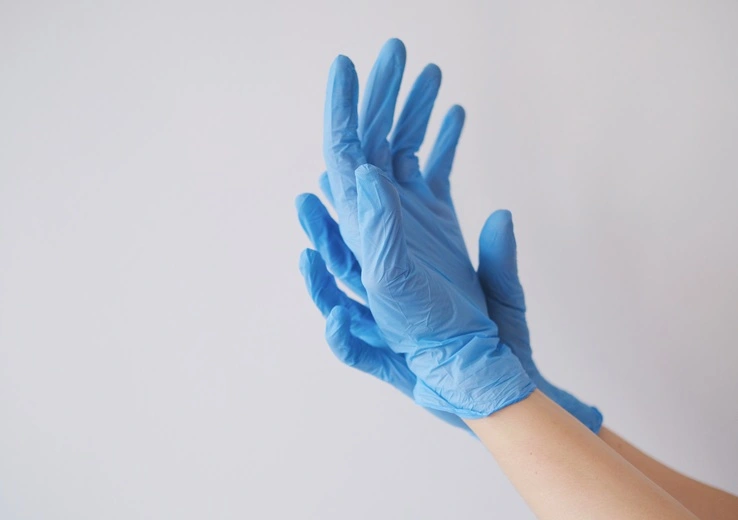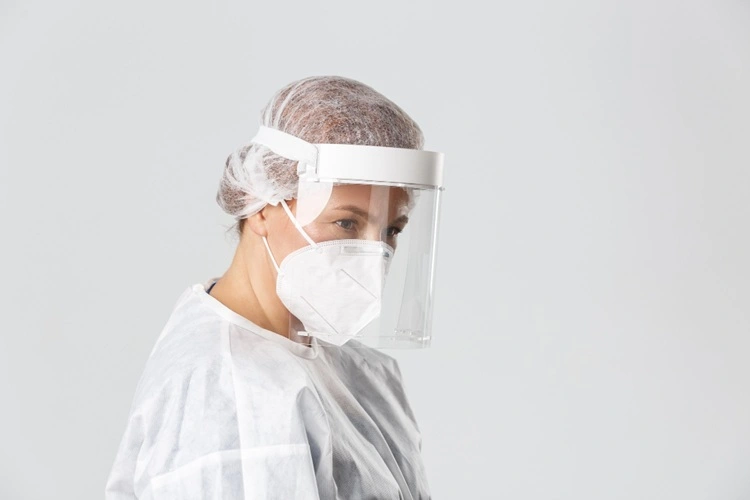Introduction to First Aid
## Goals of First-aid
First aid is the initial assistance given to an injured or ill person before professional medical assistance arrives. The key goals of first aid can be expressed in 3 Ps:
- Preserve Life
- Prevent Further Injury
- Promote Recovery
Preserve Life
Preserve life is the primary objective of first-aid. Saving life means both the victim's, you, and bystanders. Acting quickly in emergencies can prevent fatalities.
Prevent Further Injury
Protecting the casualty from worsening conditions. First aid aims to prevent secondary injuries or complications by stabilizing the victim's condition until professional help arrives.
Example
If someone falls and you suspect a spinal injury, keeping them still and stabilizing their head can prevent paralysis.
Promote Recovery
Providing proper first aid not only stabilizes the victim but also helps the healing process and minimizes long-term effects. This can include providing reassurance, reducing pain and swelling, and encouraging proper medical follow-up.
Example
If a child burns their hand, cooling it under running water for at least 10 minutes can reduce tissue damage and pain.
## Chain of Survival
The Chain of Survival consists of six interdependent links that, when followed in sequence, significantly improve survival rates for individuals experiencing sudden cardiac arrest (SCA). Each link plays a vital role in increasing the chances of survival and reducing long-term complications.
1. Early Recognition and Access to Emergency Medical Services
- Recognizing is the first and most crucial step.
- Signs include sudden collapse, unresponsiveness, and abnormal or absent breathing.
- Contact EMS immediately.
- Provide clear details about the victim's condition and location to emergency responders.
2. Early CPR
- Begin chest compressions immediately if the person is unresponsive and not breathing.
- Push hard and fast in the center of the chest at a rate of 100-120 compressions per minute.
- If trained, provide rescue breaths in a 30:2 ratio (30 compressions, 2 breaths).
- CPR keeps oxygenated blood flowing to vital organs until further help arrives.
3. Early Defibrillation
- Use an Automated External Defibrillator (AED) as soon as possible.
- AEDs analyze heart rhythms and deliver a shock to restore normal heart function.
- Follow the AED's voice prompts for proper use.
- Every minute without defibrillation reduces survival chances by 7-10%, so quick action is essential.
4. Early Advanced Resuscitation by Emergency Medical Services
- Paramedics or first responders provide advanced life support (ALS), including:
- Advanced airway management (e.g., intubation or ventilation).
- Defibrillation if an AED has not yet been used or more shocks are needed.
- Their goal is to stabilize the patient before hospital transport.
5. Post-Cardiac Arrest Care
- Once at the hospital, specialized medical teams provide post-resuscitation care.
- Treatment for preventing brain damage.
- Oxygen therapy and cardiac monitoring to assess the heart's function.
- Treatment for underlying causes of the cardiac arrest.
- This stage is crucial for improving survival and long-term recovery.
6. Recovery
- Survivors of cardiac arrest often require rehabilitation to regain physical strength.
- Emotional and psychological support is essential for both the survivor and their family.
- Long-term care may include lifestyle changes, medication, and follow-up appointments to prevent future episodes.
- Support groups and counseling can help survivors cope with the emotional impact of their experience.
## Rescue Process
A structured approach can ensure the safety of both the rescuer and the victim while providing effective first aid. The three key steps are Scene Assessment, Primary Assessment, and Secondary Assessment.
1. Scene Assessment (Ensuring Safety)
Before helping the victim, assess the situation to ensure that you and others are not at risk.
2. Primary Assessment (Checking Life-Threatening Conditions)
Once the scene is safe, focus on immediate life-threatening issues.
3. Secondary Assessment (Checking for Additional Injuries & Gathering Information)
If the victim is breathing and responsive, conduct a more detailed check to identify other medical issues.
## Emergency Medical System
## Legal Responsibilities and Consent
Understanding your legal responsibilities as a first aider is essential for providing care while protecting both yourself and the victim. These principles ensure that first aid is provided ethically and legally.
Duty of Care
As a trained first aider, you have a duty of care to:
- Act within your level of training and competence
- Provide care to the best of your ability
- Not abandon a victim once you've started providing care
- Ensure the victim receives appropriate medical attention
Important Note
Your duty of care extends until professional medical help arrives or the victim is transferred to more qualified care.
Consent for Treatment
Consent is permission from the victim to provide first aid care. There are three types of consent:
1. Express Consent (Verbal or Written)
- The victim clearly agrees to receive help
- They understand what you're going to do
- Example: "May I help you?" and the victim responds "Yes, please help me"
2. Implied Consent
- The victim is conscious but unable to respond due to their condition
- Their actions indicate they want help (reaching out, nodding)
Important
Laws vary by different location.
Good Samaritan Laws
Good Samaritan laws provide legal protection for individuals who voluntarily provide emergency assistance to those who are injured, ill, or in distress.
Protection Coverage
- Civil liability protection - Generally protects from lawsuits when acting in good faith
- Criminal liability protection - Protects from criminal charges for reasonable emergency actions
- Scope of practice protection - Covers actions within your training level
Conditions for Protection
Good Samaritan protection typically requires:
- Acting in good faith - Genuine intent to help
- No compensation - Not receiving payment for your assistance
- Reasonable care - Acting as a reasonable person would in similar circumstances
- Within scope of training - Not attempting procedures beyond your skill level
Important Limitation
Good Samaritan laws do not protect against gross negligence, reckless behavior, or intentional misconduct.
Special Considerations
Refusal of Care
If a conscious, competent adult refuses first aid:
- Respect their decision - You cannot force treatment
- Document the refusal if possible
- Encourage them to seek medical attention
- Stay nearby in case they change their mind
Exception: If the person appears impaired by drugs, alcohol, or mental condition, they may not be competent to refuse care.
Confidentiality
As a first aider, you must maintain patient confidentiality:
- Only share information with medical professionals taking over care
- Respect the victim's privacy and dignity
Abandonment
Once you begin providing first aid, you have a legal obligation not to abandon the victim unless:
- Professional medical help arrives and takes over
- You become too exhausted or ill to continue safely
- The scene becomes unsafe
- You transfer care to someone with equal or greater training
Documentation
While not always required, documenting your actions can be important:
- What happened - Brief description of the incident
- When it occurred - Date and time
- What you did - First aid provided
- Victim's response - How they responded to treatment
- Transfer of care - When and to whom you transferred care
## First-aid Kits
A well-stocked first aid kit is essential for providing immediate care in emergencies. First aid kits should be easily accessible, properly maintained, and tailored to specific environments and needs.
Suggested Basic Supplies
- Adhesive bandages (various sizes) - For minor cuts and scrapes
- Sterile gauze pads (e.g. 2x2, 4x4 inches) - For larger wounds and bleeding control
- Medical tape - To secure gauze and dressings
- Elastic bandages - For sprains, strains, and support
- Triangular bandages - Versatile for slings, wraps, and tourniquets
- Instant cold compress - For injuries and swelling
Suggested Tools and Equipment
- Disposable gloves (nitrile or latex-free) - Universal precautions
- Scissors - For cutting tape, gauze, or clothing
- Tweezers - For removing splinters or debris
- Splints (SAM splint or improvised materials) - For immobilizing fractures and sprains
- Digital thermometer - For monitoring body temperature
- Flashlight - For visibility in dark environments
- Emergency blanket - For shock prevention and warmth
- CPR face mask - For safe rescue breathing
- Emergency contact information - Local emergency numbers and poison control
- First aid manual - Quick reference guide
- Pen and paper - For recording vital signs or notes
First Aid Kit Maintenance
Regular Inspection
- Monthly checks - Verify all supplies are present and not expired
- Replace used items immediately after use
- Check expiration dates on medications and sterile supplies
- Test equipment like thermometers and flashlights
Storage Guidelines
- Cool, dry location - Prevent medication deterioration
- Easily accessible - Everyone should know the location
- Clearly marked - Use recognizable first aid symbols
- Protected from moisture - Use waterproof containers when possible
Important Note
Having a first aid kit is only valuable if you know how to use its contents. Regular first aid training and practice with kit components are essential for effective emergency response.
## Protection Devices
Protection devices are crucial in first aid to prevent disease transmission and ensure safety for both rescuers and victims.
Personal Protective Equipment
Gloves
Prevent direct contact with blood and body fluids.

Nitrile Gloves (Designed by Freepik)
Face Shields & Masks
Reduce the risk of airborne infections, splashes or debris in emergencies.

Face Shield & Mask (Designed by Freepik)
CPR Barriers & Resuscitation Equipment
CPR Pocket Mask
A small, portable mask with a one-way valve to provide safe rescue breaths and able to connect with oxygen tank when needed.